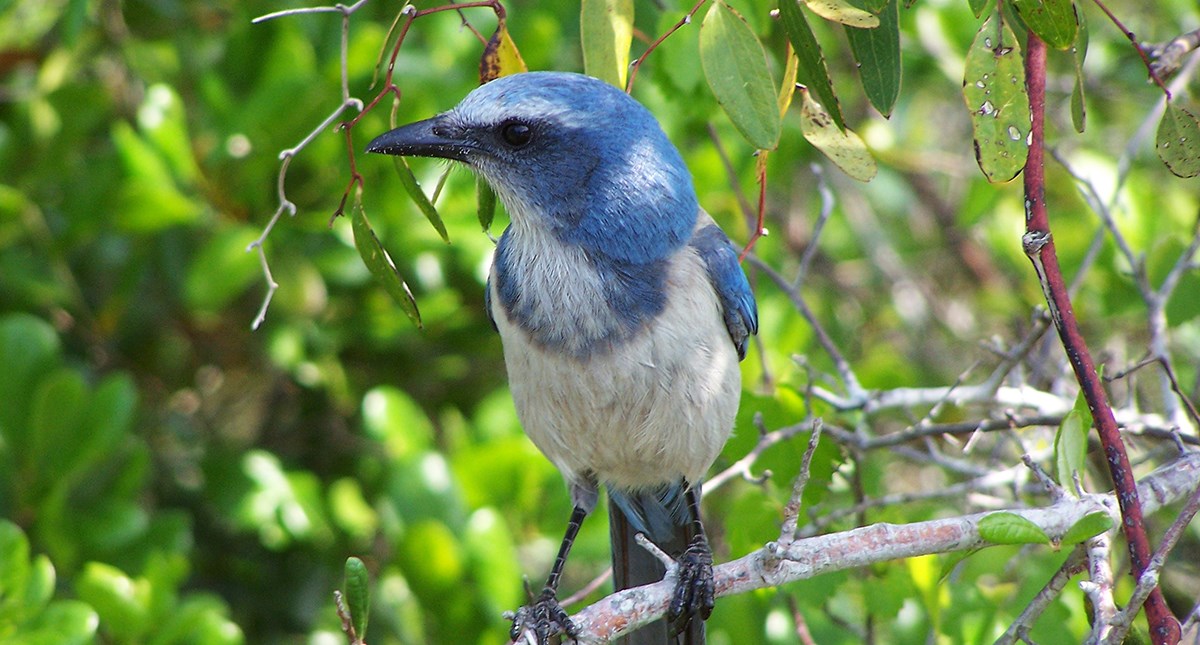Last updated: August 18, 2017
Article
Using Prescribed Fire to Restore Habitat for Threatened Florida Scrub Jay

Canaveral National Seashore and the adjoining Merritt Island National Wildlife Refuge and Kennedy Space Center are located in east central Florida. This area has one of the highest rates of lightning strikes in all of North America. Many of the plant and associated animal communities are fire-adapted, requiring occasional fire to survive.
One of these is coastal scrub vegetation, which provides habitat for several federally listed species, including the Florida scrub jay, eastern indigo snake, and southeastern beach mouse. The seashore, refuge, and space center support one of the last stable populations of the jay, which is endemic to Florida, and include almost the entire known range for the beach mouse.
In July 2012, the three agencies collaborated to complete a prescribed burn in 1,900 acres of jointly managed coastal scrub and marsh. Objectives were to improve habitat for the scrub jay, indigo snake, and beach mouse, and to reduce dangerous fuel loads near Canaveral National Seashore buildings and Kennedy Space Center facilities.
It was a true partnership effort, with participants assisting from three other national park areas: Everglades, Cumberland Island, and Cape Hatteras; three additional national wildlife refuges: Loxahatchee, Lake Wales Ridge, and Lake Woodruff; plus Kennedy Space Center, and the NPS Southeast Regional Office. The operation contributed to the goals of each agency while reducing costs by sharing personnel, engines, and particularly a helicopter to ignite the interior units and monitor fire behavior.
The park began applying prescribed fire in 2003. An exciting sign of habitat improvement was the sighting of scrub jays earlier this year 1½ miles north of their previous known location in the Bills Hill Fire Management Unit. Because the jays are nonmigratory, stay close to established territories, and rarely fly over unsuitable habitat, this is a positive outcome of prescribed burning at the park.
Contact: Doug Mullan, Canaveral park ranger, or John Stiner, Canaveral resource management specialist
Email: e-mail us or e-mail us
Phone: (386) 428-3384 or (321) 267-1110
